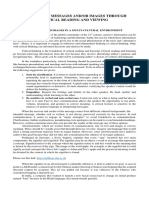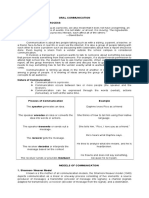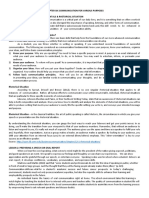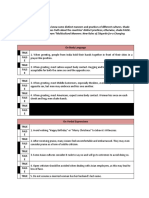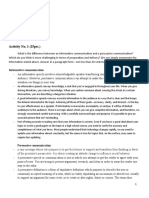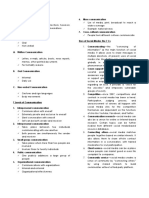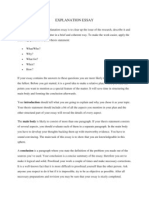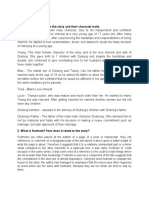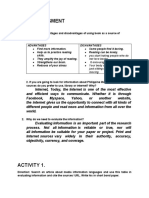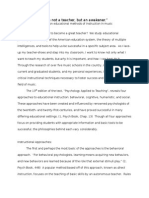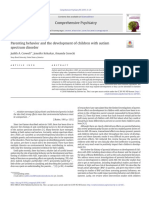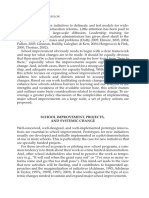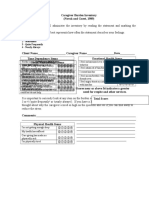0% found this document useful (0 votes)
753 views19 pagesLesson 5 Part 1
This document summarizes key points about oral communication in the workplace. It discusses the importance of oral communication skills for business and identifies several challenges that can interfere with effective communication, such as poor listening, cultural differences, physical distance between coworkers, ego and attitudes, and authority hierarchies. It also provides 10 specific top communication issues that business communicators should consider, such as failure to listen, poorly written documents, gender bias, and lack of knowledge. The document aims to help readers understand challenges to workplace communication and how to address them.
Uploaded by
EugeneAguilaCopyright
© © All Rights Reserved
We take content rights seriously. If you suspect this is your content, claim it here.
Available Formats
Download as PDF, TXT or read online on Scribd
0% found this document useful (0 votes)
753 views19 pagesLesson 5 Part 1
This document summarizes key points about oral communication in the workplace. It discusses the importance of oral communication skills for business and identifies several challenges that can interfere with effective communication, such as poor listening, cultural differences, physical distance between coworkers, ego and attitudes, and authority hierarchies. It also provides 10 specific top communication issues that business communicators should consider, such as failure to listen, poorly written documents, gender bias, and lack of knowledge. The document aims to help readers understand challenges to workplace communication and how to address them.
Uploaded by
EugeneAguilaCopyright
© © All Rights Reserved
We take content rights seriously. If you suspect this is your content, claim it here.
Available Formats
Download as PDF, TXT or read online on Scribd
/ 19













